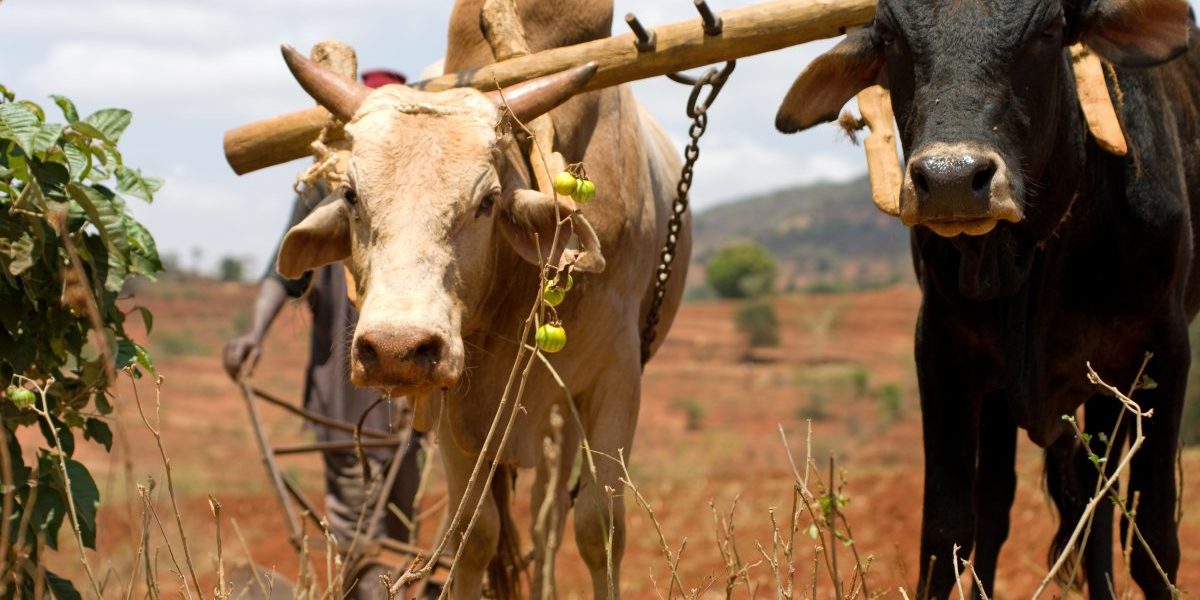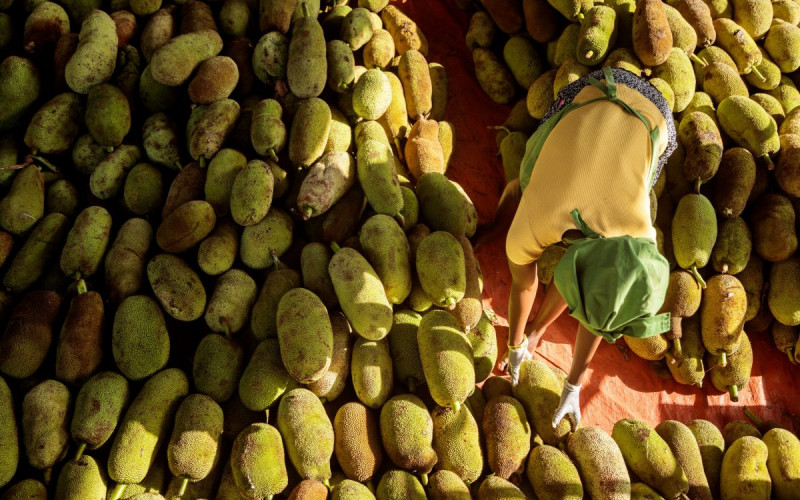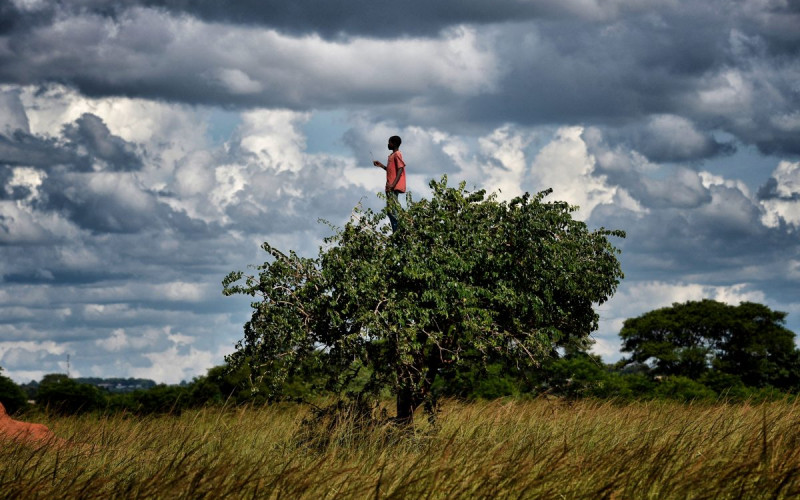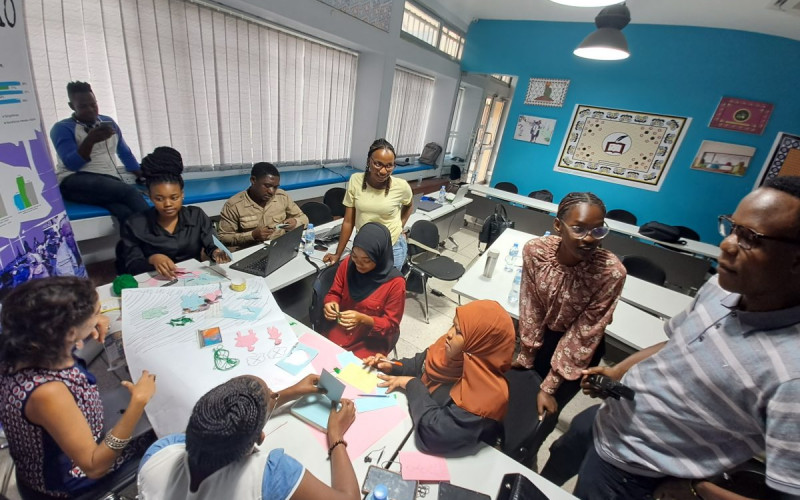Recommendations
- Soil quality: the G20 should support the mapping of African soils, persuade relevant global institutions to capacitate soil science professionals and mobilise financial support for the Soil Initiative for Africa.
- Water management: the G20 ought to mobilise financial support for micro-irrigation or small-scale irrigation schemes to complement large-scale, capital-intensive schemes. Fertiliser: the G20 should mobilise financial support to drive the African Development Bank’s Africa Fertilizer Financing Mechanism and encourage investment for the construction of fertiliser manufacturing and blending plants.
- Quality seed: the G20 should assist African countries to categorise and document germplasm accessions and develop plant genetic resources for food and agriculture. It should also urge collaboration between countries, international organisations, research institutions, private companies and farmers, and push for the setting of global rules to ensure adherence to seed quality standards.
Executive summary
With hunger getting worse in Africa, it is increasingly likely that the continent will miss the
‘zero hunger’ and ‘food security’ targets that underpin the UN Sustainable Development Goals
2030 and the AU Agenda 2063. Food production on the continent is being hampered by
three main factors, namely limits to agricultural land, limits to agricultural productivity and
climate change effects. The last 30 years have seen a steady decline in Africa’s arable land per
capita, exacerbated by population growth, urban expansion and infrastructural development.
In addition, agricultural productivity has deteriorated over the years, evidenced in poor soil
quality, sub-standard seed, water shortages and poor water management, limited fertiliser
use and limited technology adoption. Africa is also very vulnerable to environmental and
ecological damage due to accelerating climate change, which is not helped by the fact that
the continent lacks committed, collective leadership to mitigate the adverse effects of
climate change.
Policies aimed at addressing the food production and food security challenges facing Africa
are increasingly leaning towards boosting agricultural productivity as opposed to increasing
cultivable land. To this end, the G20 should focus on five priority areas, namely soil quality, water management, fertiliser, quality seed and climate change. In addition, the G20 should mobilise and strengthen partnerships between research institutions, private sector entities and farmers in efforts to commercialise new seed varieties emanating from public research institutions, while also pushing for the setting of global rules to reinforce seed quality control measures.
Introduction
This policy brief focuses on food availability, which is measured by household food production
and crop diversity. The three main contributors to the food production challenge in Africa are
identified as limits to agricultural land, limits to agricultural productivity and climate change
effects. The brief ends with a call to action on what the G20 can do to reverse the decline in
food production per capita in Africa.
Achieving food security1Food security exists when all people can always access sufficient food, which is safe and nutritious, to meet their dietary needs and food preferences so as to enjoy an active and healthy life. Food security consists of four main attributes, namely food availability, accessibility, utilisation and stability. remains a global and regional priority for policymakers. Food production systems2According to the food systems approach, agricultural production must be sustainable, efficient, inclusive and resilient need to transform, with greater recognition given to the food systems approach in which production is a vital component. This perhaps explains why the G20 Agriculture Ministers’ Meeting held in Bali on 28 September 2022 3Statement by the Chair of the G20 Agriculture Ministers’ Meeting, https://www.fas.usda.gov/sites/default/files/inline-files/22%2009%2028%20Agriculture%20Ministers%20Meeting%20Chair%27s%20Summary.pdf. and the G20 Joint Finance and Agriculture Ministers Meeting held in Washington DC on 11 October 20224G20 Presidency’s Chair’s Summary, http://www.g20.utoronto.ca/2022/221011-finance-agriculture.html. covered food security issues so extensively. Both meetings stressed that the current global food security and nutrition crisis is the greatest ever seen in modern history and issued a call for immediate and bolder action to address this crisis. In 2022, the G20 Rome summit reaffirmed its commitment to achieving food security and adequate nutrition for all.5G20 research group, ‘G20 Rome Leaders’ Declaration on Food Security, nutrition, agriculture and food systems,’ October 31, 2021
Despite the above commitments, current projections put the prevalence of undernourishment globally in 2030 at 8%,6Food and Agriculture Organization (FAO) et al., The State of Food Security and Nutrition in the World 2022. Repurposing food and agricultural policies to make healthy diets more affordable (Rome: FAO, 2022), https://doi.org/10.4060/cc0639en. a similar figure to that recorded at the launch of the UN Sustainable Development Goals (SDGs) in 2015. This suggests that both Africa and the world at large may miss the ‘zero hunger’ and ‘food security’ targets by 2030.7FAO, Africa – Regional Overview of Food Security and Nutrition (Accra: FAO, 2021), 2, https://doi.org/10.4060/cb7496en. The African continent is also unlikely to meet the African Union (AU) Agenda 2063 target of eliminating hunger and food insecurity by 2025.
Indeed, there is evidence that hunger is getting worse in Africa and that the distance to the targets is widening every year.8FAO, Africa – Regional Overview of Food. The World Food Programme branded 2022 ‘a year of unprecedented hunger’.9World Food Programme, ‘A Global Food Crisis’ The prevalence of undernourishment rose from about 16.7% in 2014 to 21% in 2020. One in four people (or 232 million people) on the continent are undernourished, making Africa the most food-insecure region in the world.10African Development Bank Group, Transforming African Agriculture (March, 2016). However, the prevalence of undernourishment differs across countries, with some of the best performers being Seychelles (2.5%), Algeria (2.5%), Tunisia (3.1%), Ghana (4.1%), Côte d’Ivoire (4.4%) and South Africa (6.9%).11FAO et al., The State of Food Security The worst performers include Central African Republic (52.2%), Madagascar (48.5%), Congo (39.8%), Liberia (38.3%), Rwanda (35.8%) and Lesotho (34.7%).
It is important to note that the food production challenge in Africa is multi-dimensional. Factors contributing to this challenge include land fragmentation, poor soil health, water shortages, low fertiliser use, poor seed, low technological adoption, environmental degradation and high population growth rates. These factors can be grouped under three categories: limits to agricultural land, limits to productivity and climate change shocks.
Limits to agricultural land
Agriculture is the dominant economic sector in Africa. It employs over 60% of the workforce and accounts for roughly one-third of the continent’s GDP. All over the world, agricultural production is highly dependent on land. However, Africa has large amounts of untapped agricultural land that could be used to increase production. The World Development Indicators12The World Bank, World Bank Development Indicators show that agricultural land as a share of total land area in Sub-Saharan Africa in 2020 was 42.5% while arable land as share of total land area was 9.3%.
Over the last 30 years, there has been a consistent decline in arable land per capita, falling from 0.31 in 1990 to 0.2 in 2020.13The World Bank, World Bank Development Indicators This decline has been attributed to a steady increase in population.14FAO, Africa – Regional Overview of Food Security. Projections show that Africa’s population will double from 1 billion to 2 billion by 2050, coupled with increased urbanisation. Unless action is taken to reverse this trend, we are likely to see a further decline in the average cropland per capita over the coming years.
Population pressure affects agricultural production through increased demand for land. It also results in cropland conversion for the purposes of urban expansion and construction of industries and infrastructure, which reduce arable land. Furthermore, population pressure gives rise to land fragmentation.15World Economic Forum, ‘Food security and why it matters,’ January 18, 2016 Land fragmentation in an agricultural context refers to the dominance of small and marginal farmers, with most of the cultivable area belonging to small land holdings. It hinders mechanisation and makes it costly due to duplication of fixed farm equipment and a larger labour force requirement.
Limits to agricultural productivity
In Africa, the main causes of low agricultural productivity include poor soil health, water shortages and low technology adoption (including low fertiliser use, poor seed and limited application of chemical inputs, hand tools, tractors, pumps and irrigation systems). Africa is the only world region in which agricultural production per capita has been declining over the years. Agricultural output per hectare for most crops is below the global averages.16Farm Africa, ‘Addressing challenges in access to quality seed for smallholder farmers’ (March, 2022) In part, this is due to limited use of modern agricultural technology and equipment to scale up production, improve productivity and enhance value addition.
Food production systems in Africa are characterised by small-scale operations and short
local supply chains. Over 95% of food production is rain fed.17Pan African Farmers’ Organization, African Food Systems, (Kigali: PAFO, 2021), 7 In addition, only about 5.5% of cultivable land in Africa is suitable for irrigation due to limited water availability and adverse soil conditions.18Len Abrams, SIWI, Unlocking the potential of enhanced rain fed agriculture, Report 39 (Stockholm: SIWI, 2018), 5. Rainfall is highly variable, with the prospect of the average annual rainfall decreasing in the face of accelerating climate change. This increases the susceptibility of rain-fed agriculture to climate impacts.
Declining soil quality is one of the major threats to agricultural productivity in Africa. About 65% of soil under cultivation in Africa is already degraded. Degradation occurs mainly through loss of organic carbon, erosion, acidification, pollution, sealing, compaction, nutrient imbalance, salination and solidification, and biodiversity loss. Degraded soils are not able to capture carbon, filter contaminants out of water supplies or capture water on water-scarce lands. Soil degradation increases the soil’s exposure to the effects of climate change. Some of the factors that have contributed to the decline in soil health include population growth, deforestation, urbanisation, pollution and waste disposal, climate change and unsustainable land management practices.
In the area of soil health, the main interventions are the Global Soil Partnership established by the Food and Agriculture Organization (FAO) Council in 2012, the Voluntary Guidelines for Sustainable Soil Management adopted by the FAO Council in 2016 and the Soil Initiative for Africa established by the AU in 2020. The main objective of the Global Soil Partnership was to improve governance and promote the sustainable management of soils. The Soil Initiative for Africa is a recent joint effort between the Alliance for a Green Revolution for Africa (AGRA), the African Green Revolution Forum (AGRF) and the AU Commission (AUC) to improve soil health in Africa. An African Fertilizer and Soil Health Summit has been planned for mid-2023, with the aim, among other things, of serving as a platform for officially launching the Soil Initiative for Africa.
Despite these interventions, African soils are not properly mapped. Poor mapping of soils makes it difficult to quantify the extent of soil degradation on the continent. Without a soil map, it is difficult to assess the type and efficacy of interventions as well as the effectiveness of advisory services. In the same vein, the capacity of soil science professionals is weak and the information-generating capabilities of smallholder farmers is limited.
Agriculture is the largest consumer of water in Africa. However, the water resources are facing increasing threats from declining annual rainfall (and more droughts), pollution, poor water management, population growth and urbanisation. Despite regional and international interventions around water management, the enabling environment and the capacities of both the public (water and agriculture ministries, irrigation agencies) and private sector actors (companies, farmer organisations) to effectively discharge their mandates remain weak. Similarly, many irrigation initiatives tend to concentrate on largescale, capital-intensive schemes at the expense of small-scale schemes, which are more affordable for the bulk of small-holder producers.
In most regions in the world, agricultural productivity has been greatly boosted by the increased use of fertilisers.19Michael Morris et al., Fertilizer Use in African Agriculture: Lessons Learned and Good Practice Guidelines. Directions in Development; Agriculture and Rural Development (Washington, DC, 2007), https://openknowledge.worldbank.org/handle/10986/6650. Despite a notable increase in agricultural production between 2000 and 2019, which could be explained by greater efficiency in agricultural practices (among other factors), Africa still lags behind other regions in the use of fertilisers.20FAO, Africa – Regional Overview of Food Security, 4–9. On average, African farmers use about 8kg of fertiliser per hectare annually, which is extremely low compared to Asia and Latin America where farmers use around 140kg per hectare annually. In addition, the price of fertiliser in Africa is about two to four times the world price of fertiliser.21International Fund for Agricultural Development (IFAD), ‘How to boost fertilizer use by African smallholders,’ https://www.ifad.org/pt-BR/web/latest/-/news/how-to-boost-fertilizer-use-by-african-smallholders.
The FAO launched a Code of Conduct for fertiliser in 2019 to provide a framework for minimising the environmental effects of fertilisers and to maximise soil health, crop yield and nutritional value. In 2007, the Africa Fertilizer Financing Mechanism was established by the African Development Bank (AfDB) in conformity with the Abuja Declaration whereby AU member states committed to improving agricultural productivity by providing financing to boost fertiliser use in Africa to 50kg of nutrients per hectare. Despite these efforts, the penetration and reach of the Africa Fertilizer Financing Mechanism are limited and fertiliser manufacturing and blending in Africa remain a dream. With the launch of the African Continental Free Trade Area (AfCFTA), though, there is optimism that a strategy will be developed under the AfCFTA agreement to promote fertiliser trade and complement efforts to bolster the uptake of fertiliser in Africa.
Considering all inputs, the use of high-quality seed is the most important for agricultural productivity.22African Union Commission (AUC), The Seed Sector in Africa (Addis Ababa, 2021), https://au.int/sites/default/files/documents/41357-doc Africa_Seed_Industry_Report_summary_April_2020_submFeb2021_a_signed_and_posted_202111.pdf. This is because the upper limit of farm output is determined by the type of seed. However, many African farmers do not use improved seeds. Only about 20% of farmers use quality seed due to its inaccessibility and unaffordability.23Farm Africa, ‘Addressing challenges.’ This limited use of quality seed is fuelled by declining public investment in seed production. It was expected that the private sector would fill the gap left by the public sector, but this has not happened. Instead, hybrid seed development efforts by medium and large seed companies tend to target high-value crops and large farms. If a larger proportion of African farmers adopted improved seeds, an additional 25 million metric tons of food could be generated, significantly reducing food insecurity in Africa.24Abubakar Ibrahim, ‘Africa can gain food security and wealth by building its seed industry, report finds’ (Alliance for Science, September 23, 2019), https://allianceforscience.org/blog/2019/09/africa-can-gain-food-security-wealth-building-seed-industryreport-finds/.
Continental efforts to support the production, distribution and use of quality seed in Africa include the African Seed and Biotechnology Programme (ASBP) and The African Seed Index (TASI), which were both spearheaded by the AUC. The ASBP was established in 2008 by the AU, with the support of the FAO, to enhance the efficiency and effectiveness of African seed systems and to promote the use of biotechnology and methodologies in the seed sector. TASI was created in 2015 as a monitoring tool to assess the development and competitiveness of a country’s seed system. Apart from these efforts by the AU, African countries have acceded to agencies that set global standards and regulate the international seed trade, including the Organisation for Economic Cooperation and Development seed schemes, the International Union for the Protection of New Varieties of Plants and the International Seed Testing Association.
Notwithstanding these efforts, the seed system in Africa suffers from uncategorised and poorly documented germplasm accessions; underdeveloped plant genetic resources for food and agriculture in situ; underfunding of government breeders; inadequate commercialisation of new seed varieties from public research institutions; weak enforcement of seed quality control measures; and the prevalence of fake and counterfeit seed.25This is potential focus area for the AfCFTA in its negotiations over intellectual property
One of the main elements in the transformation of Africa’s agriculture is the adoption and use of mechanical technologies. To promote mechanisation in Africa, the FAO and AUC developed the ‘Sustainable Agricultural Mechanization: A Framework for Africa’ 26FAO, Sustainable Agricultural Mechanization: A Framework for Africa (Addis Ababa, 2019), https://www.fao.org/3/ca7304en/CA730
4EN.pdf to guide member countries in how to mainstream sustainable agricultural mechanisation in national and regional agricultural development programmes. Recent statistics show that the mechanisation of agriculture in Africa is still limited. In fact, agriculture on the continent stands out as the least-mechanised in the world, with farmers in other developing countries having 10 times more mechanised tools per farm than African farmers.27New Partnership for Africa’s Development, Mechanisation for Agricultural Transformation, file:///C:/Users/27834/Downloads/3.2%20Mechanisation%20-%20Digital_0.pdf. Some of the factors driving the low level of mechanisation are credit, insurance and information constraints as well as high transaction costs and imperfections in labour and land markets.
Climate change shocks
Africa faces constant threats to its environmental and ecological systems. Increasing pressure is being placed on forests, water and marine ecosystems, resulting in biodiversity loss. The continent is particularly susceptible to climate change shocks, such as climate-related disasters, unpredictable and changeable weather patterns, drought, pests and diseases. Climate change impacts are already being felt in the form of rising temperatures, inconsistent weather patterns and more frequent, extreme weather events, such as drought which increases water scarcity and reduces cultivable land. Changes in rainfall and temperature patterns lead to a reduction in crop yields and the nutritional quality of major cereals and lowers livestock productivity, thus further increasing food insecurity in the region. There is evidence that each drought or flood in an African country, such as Ethiopia, Malawi, Mali, Niger or Tanzania, is associated with a 5–20% increase in food insecurity.28International Monetary Fund (IMF), ‘Climate change and chronic food insecurity in Sub-Saharan Africa’ (IMF Departmental Paper, No. 2022/016, September 15, 2022).
There are several interventions around climate-smart agriculture (CSA). The Africa CSA Alliance supports countries in mainstreaming CSA in their development plans. The FAO engages international financing institutions such as the Green Climate Fund and helps countries to access funds for the implementation of CSA projects.29FAO, ‘Climate smart agriculture: Africa,’ https://www.fao.org/climate-smart-agriculture/on-the-ground/africa/en/ The AU has a climate change and resilient development strategy and action plan for 2022–2023 aimed at ensuring that institutions, strategies and decisions on climate risk management and climate-resilient development are identified and implemented, as set out in Agenda 2063 and aligned to Agenda 2030.30African Union Commission (AUC), ‘Agenda 2063 The Africa we want’ (Addis Ababa, 2016). The G20 Agriculture Ministers (Florence, Italy – September 2021) committed to promoting research and innovation to enhance the sustainability of agricultural and food systems, thereby mitigating and adapting to climate change and halting biodiversity loss.31G20 Research Group, ‘G20 Agriculture Ministers’ Meeting: Communiqué’ (September 18, 2021).
Despite these interventions, Africa still lacks the collective leadership needed to mitigate the effects of climate on food production. Different African countries pursue different policies for the mitigation of climate change effects. Different institutions, in turn, have different mechanisms to promote climate-smart agriculture in Africa. There is an opportunity for the G20 to support African countries in consolidating different funding mechanisms available to scale up climate-smart agricultural investments and ensure the implementation of priority policies that support the transition.
A call to action
The African continent is not on the right trajectory if it wishes to realise the target of SDG 2 and has limited resources with which to feed its growing population of the hungry. Meeting this target will be premised on practical actions at the farm level. However, making this happen will require collective actions at local, national, regional and global levels. Such collective effort and partnerships will bring together the public and private sectors and political, technical and financial actors. In addition, these partnerships could be used to mobilise the necessary human, technical, financial and infrastructural resources.
Among the priorities for G20 attention are:
Soil quality
- Support the mapping of African soils to understand the magnitude of degradation on the continent, the type and efficacy of current initiatives, and the availability of advisory services.
- Pull in the relevant global institutions to implement accelerated programmes on capacitating soil science professionals in Africa – where the need but also the potential is the greatest.
- Mobilise financial support from a consortium of multilateral and regional development banks to finance the Soil Initiative for Africa at the country level.
Water management
- Mobilise financial support from multilateral development banks for micro-irrigation (small-scale irrigation schemes) to complement the large-scale capital-intensive schemes.
Fertiliser
- Mobilise financial support from a consortium of multilateral and regional development banks to boost the Africa Fertilizer Financing Mechanism established by the AfDB.
- Encourage the construction of fertiliser manufacturing and blending plants through consortia of investors and public–private partnerships.
Quality seed
- Build the capacity of African countries to categorise and document germplasm accessions and to develop plant genetic resources for food and agriculture in situ.
- Boost collaboration between countries, international organisations, research institutions, the private sector and farmers in efforts to commercialise new seed varieties emanating from public research institutions.
- Push for the setting of global rules to govern the enforcement of seed quality control measures.
Climate change
- Support African countries in consolidating the different funding mechanisms available to scale up climate-smart agricultural investments and ensure the implementation of priority policies that support the transition. This will provide collective leadership to help in mitigating the effects of climate change on food production.
- Fund institutions such as the International Food Policy Research Institute (IFPRI) to undertake extensive research on climate-smart agriculture with a view to providing a solution that responds to Africa’s food insecurity challenges. This is because food crises and climate change effects are collective problems in Africa.







